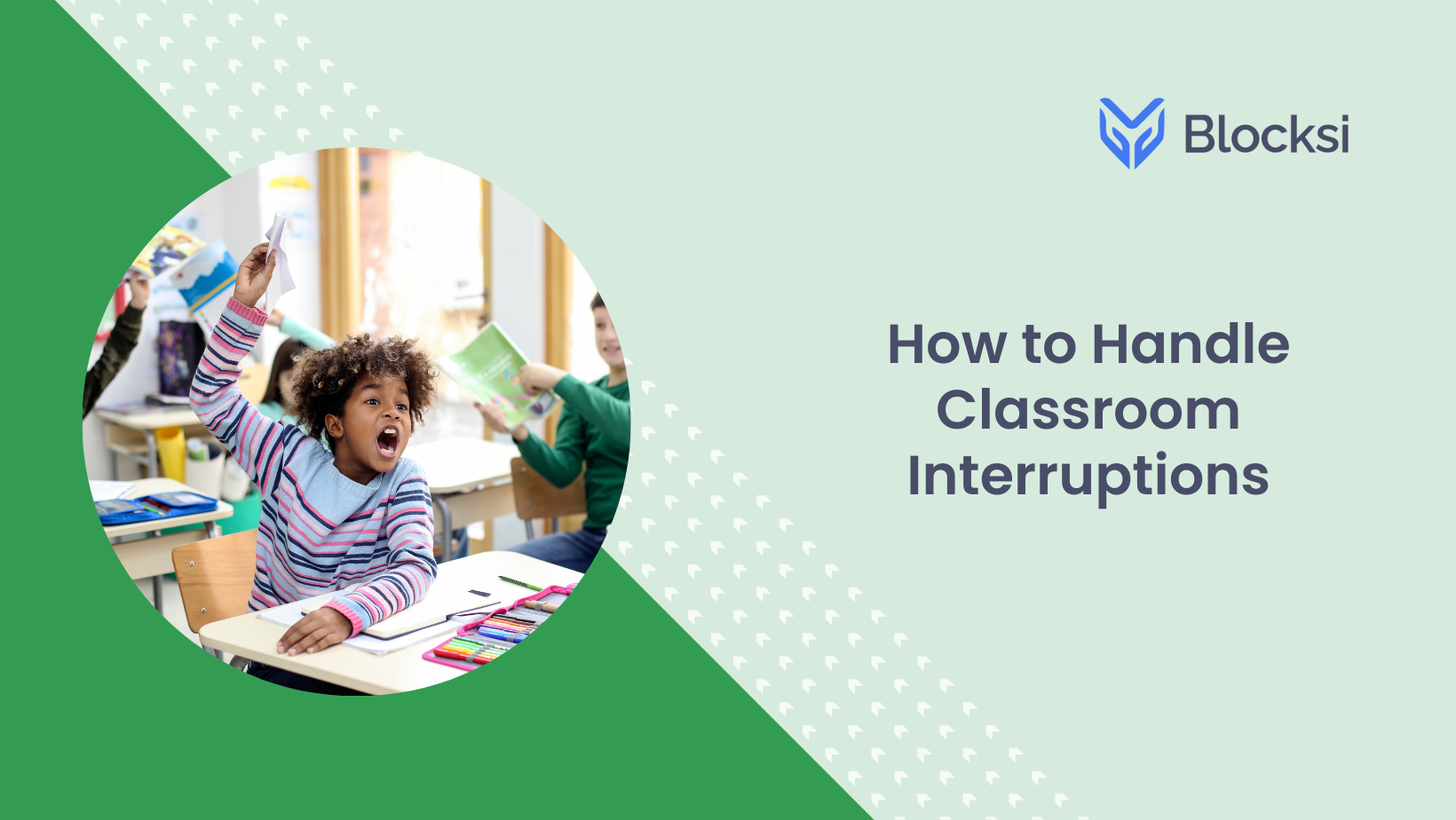NEWS
How to Handle Classroom Interruptions

Teachers know every minute in the classroom counts, but frequent interruptions can make maintaining focus quite tricky. While a quick announcement or a student stepping out may seem minor, the cumulative effect is massive. 2021 research from the Harvard Graduate School of Education shows just how much instructional time is lost—and here’s what schools can do to reclaim it.
How Many Interruptions Do Classrooms Face?
A study conducted in the Providence Public School District found that the average classroom experiences over 2,000 interruptions per year, adding up to 10 to 20 lost days of instruction annually. These disruptions come in many forms:
- Intercom announcements
- Unscheduled staff visits
- Student pullouts
- Late arrivals and early dismissals
Each disruption lasts only a few minutes, but the real problem is what follows it. It takes time for students to re-focus and get back on track. Teachers often find themselves repeating instructions, answering off-topic questions, or waiting for the class to settle down. Over time, these disruptions can snowball, making it harder to cover material and maintain a desired level of learning productivity.

How Lost Instructional Time Affects Student Learning
When lessons are constantly interrupted, students struggle to stay engaged. The 10 to 20 full days lost due to disruptions mentioned in the Harvard study lead to:
- Rushed instruction, forcing teachers to condense lessons or skip important material.
- Frequent re-focusing, as students need time to regain concentration after each disruption.
- Increased teacher workload, requiring more time for behavior management and lesson adjustments.
Frequent disruptions mean students lose focus, forcing teachers to repeat instructions and cut lessons short. Over time, this adds up to significant learning gaps and increased frustration for both students and educators.
💡 Read more on keeping ahead of teacher burnout with AI classroom tools.
Reducing Classroom Interruptions and Regaining Learning Time
While some interruptions are unavoidable, schools can however take proactive steps to minimize their impact and ensure teachers spend more time teaching.
- Limit Unnecessary Disruptions: Schools can reduce intercom announcements, schedule pullouts strategically, and encourage staff to limit classroom visits.
- Improve Student Focus: Digital distractions are a major interruption. Implementing classroom management tools helps teachers keep students engaged, reducing the need for constant redirection.
- Equip Teachers with Insights: Give educators real-time visibility into student activity and enable them to address potential distractions before they escalate into bigger disruptions.
This is How Blocksi Helps Reclaim Lost Time
One of the biggest contributors to classroom disruptions today is off-task digital behavior—students checking social media, playing games, or browsing unrelated websites during class. This is where Blocksi’s Classroom Management System comes in.
✅ Monitor Student Screens – Teachers can see student activity in real time and guide them back on task.
✅ Block Distractions – Instantly restrict access to non-educational websites and apps.
✅ Keep Students Engaged – Tools like AI Quiz Generator, messaging, and content sharing make lesson delivery smoother and more efficient.
Additionally, Blocksi provides data-driven insights so teachers can see trends in classroom focus, adjust their approach accordingly, and personalize learning. Schools using smart classroom management tools report smoother lessons, fewer disruptions, and more productive instructional time.

Small Fixes = Big Results
By reducing interruptions, schools can gain back weeks of lost instruction. As a result, student performance improves, and teachers experience a less stressful environment. Whether through better scheduling, digital oversight, or smarter classroom tools, every effort to reduce distractions brings significant benefits.
Is your school ready to reclaim lost learning time? If the answer is yes, don’t just take our word on it — reach out and get a free trial to see for yourself!
SOURCES
[1] Kraft, M. A., & Monti-Nussbaum, M. (2021). The big problem with little interruptions to classroom learning. AERA Open, 7, 23328584211028856.
[2] The Hidden Cost of Classroom Interruptions





